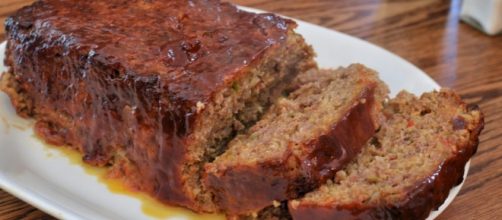I grew up in a family with a very tight budget. Without going into too much detail, there were five kids at home, a single parent, and an income from only welfare, so times were tough. Somehow, mom always pulled through at mealtime. She used to make Meatloaf only on weeknights during the school year. Any other night wouldn't have worked (no way would there have been leftovers that she counted on for at least one meal per week).
Ingredients for meatloaf
1 pound of ground beef ($2.17/pound)
1 pound ground pork ($2.85/pound)
1 box generic stuffing ($1.48)
all ingredients for stuffing
- 1 egg ($0.12)
- 1 c.
water
- 1 m. onion ($0.50)
Optional sauce for the top (some like it, some don't)
1/2 c. ketchup ($0.41)
1/2 c. brown sugar ($0.24)
2 T water
Optional sauce
just mix the ingredients together and about 15 minutes before the meatloaf is done, spread it on top of the loaf and put it back in the oven to caramelize.
Instructions for meatloaf
This has to be one of my personal favorites even though it is one of the easiest to make. The ground beef can be substituted with ground venison if you're a hunter. Basically, take all of the ingredients and what the stuffing calls for (bread cubes, chopped onions, a beaten egg, water, and a seasoning packet) and mix it together with the meat, form the mixture into a loaf on a sheet pan (lining the sheet pan with aluminum foil makes it easier to clean up) and place in the oven for 1.5 hours.
If you like the sauce on top, remove the meatloaf approximately 15 minutes before it is done and spread the sauce mixture on top. Place the meatloaf back in the oven to finish cooking; during this time the sauce will caramelize. If you have a meat thermometer (which I highly recommend investing in), you will want the internal temperature to be >165°.
If you plan it right, this would be a meal for two nights, unless you have a big family. Leftover meatloaf makes great sandwiches (if there are any leftovers).
Meatloaf history
My mother would generally double this recipe and make two loaves. This meal would serve our family for two nights (or one night and lunch for the next day).
I still enjoy going out to mom's house for dinner on meatloaf night and we generally have meatloaf once per week during the fall and winter at my house. Even though it is such a simple meal, it is still a favorite. My only complaint about meatloaf (made my way) is that it tends to be a little bit greasy. Meatloaf has its origins in ancient Rome where they would mix finely chopped meat with some type of filler (usually bread and wine), also called a panade, and then form it into patties.
These patties were then grilled and served to guests. This recipe spread to ancient France, Germany, and so on until it came to the New World with immigrants. Somewhere along the way, the wine was substituted with milk.
During the Great Depression, water or beef/chicken stock replaced the milk and, voila, now we have the American classic served in small-town diners and American homes that everyone knows.
Meatloaf is absolutely a classic, from the heavy dish originating in Russia and Italy to the slightly lighter American homestyle meal. Around 400-500 AD, Romans began using finely chopped meat scraps from higher-quality cuts, mixing them with wine (the ancient Romans were fond of their alcohol) and bread that had gone stale or was otherwise bound for the garbage, also called a panade, formed the mixture into patties, and grill them. These patties were served to guests and meatloaf was born.
In the late 1800s, the invention of the hand-cranked grinder made grinding meat much simpler, into something every American housewife could do.
It was in these times that the meatloaf made it to The American dinner table on a regular basis. No longer would ground meat have to come from the butcher; it could be produced at home relatively simply. Although meatloaf started as a way to use meat scraps, it has made it into American culture. One can even find meatloaf on the menu at many restaurants: small-town diners and fine dining venues alike.
Meatloaf has come far from the dense mixture portrayed in the ancient Roman cookbook, Apicius.


